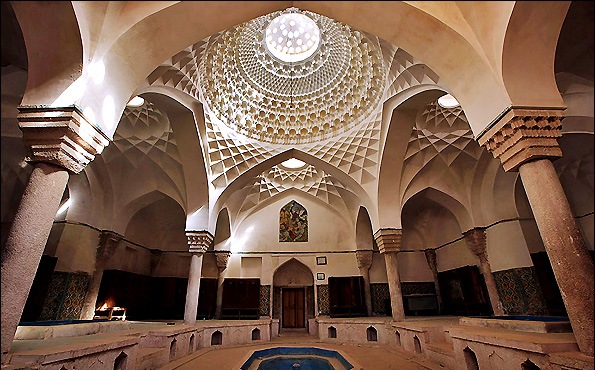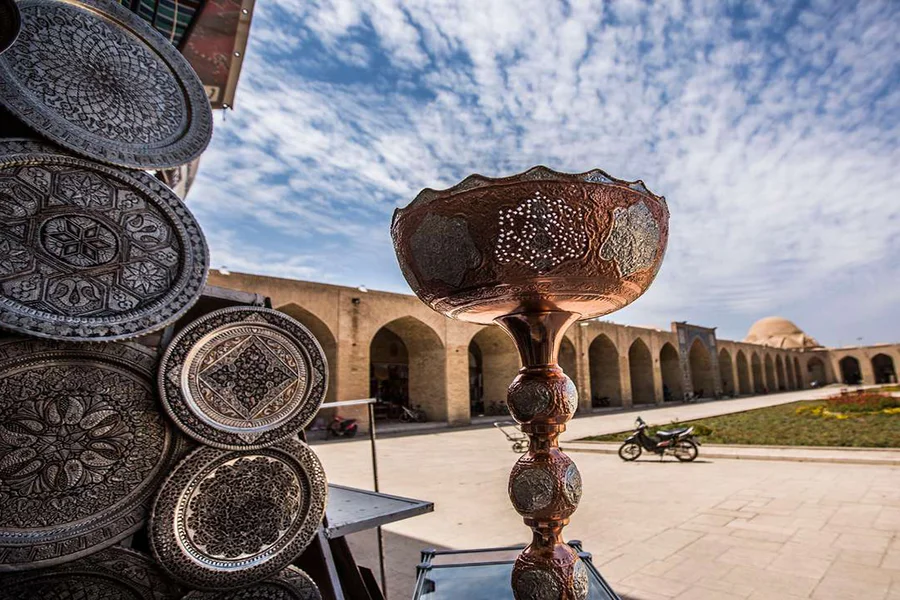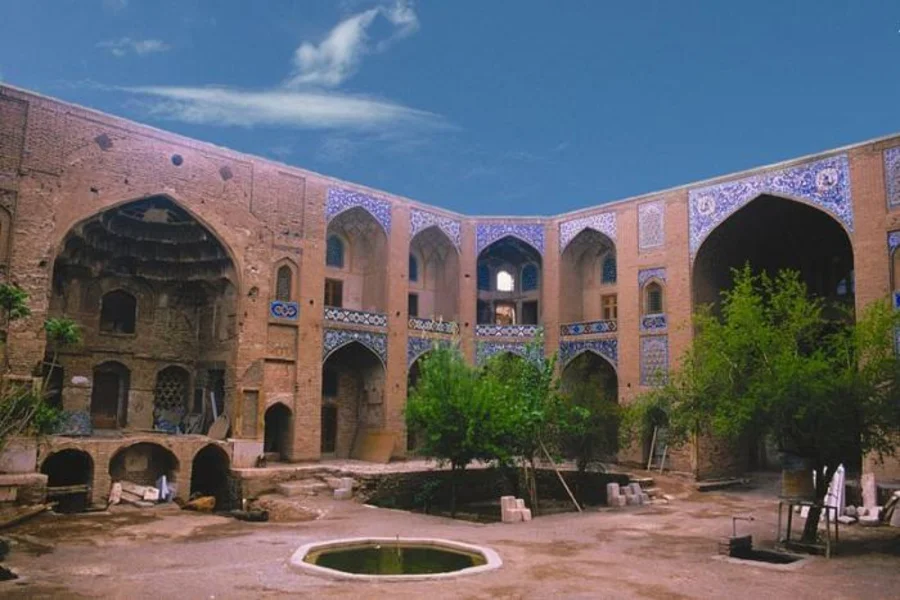
Explore the Ganjali Khan Complex in Kerman
Nestled next to the Grand Bazaar of Kerman, the Ganjali Khan Complex is a captivating historical site featuring a square, caravanserai, bathhouse, school, mosque, and water reservoir. This remarkable ensemble showcases Kerman’s rich architectural heritage. Discover one of the city’s most iconic landmarks with Tours of Iran and immerse yourself in the vibrant history and culture of Kerman.
Iranian historical cities often boast a grand, ancient bazaar, and visiting these markets offers much more than just shopping. It’s an opportunity to immerse yourself in local culture, listen to the regional dialect, and discover affordable treasures. In Kerman, the expansive old bazaar in the heart of the city provides all of this, along with a chance to admire its stunning ancient architecture.
By exploring this bazaar, you’ll also encounter the Ganjali Khan Complex, conveniently located next to the market. This historic site, named after Ganjali Khan—a prominent Safavid-era ruler who governed Kerman for around 30 years—offers a fascinating glimpse into the city’s development during his reign. His contributions have left a lasting impact on Kerman, making this complex a must-see for any visitor.
Spanning 11,000 square meters, the Ganjali Khan Complex was designed by the architect Mohammad Memar Yazdi in the Isfahani style. This architectural masterpiece features a variety of buildings and structures, each with its own unique charm. Let’s explore these components in detail, enriching your visit to Kerman with a deeper understanding of this historic site.
At the heart of Kerman’s Grand Bazaar, you’ll discover a charming square surrounded by the bustling market on three sides and the Ganjali Khan caravanserai on the fourth. This square is a stunning example of traditional Iranian architecture, complete with a serene pond and green space. Here, you can pause to admire the intricate tile work and graceful brick arches that define its beauty. The true significance of this square is revealed through the thoughtful urban planning that went into its design. As a pedestrian-only area, it offers a peaceful retreat in the midst of the city.

The Bazaar
To begin your exploration of the bazaar, head to the southern side of Ganjali Khan Square. On your right, you’ll find the Ganjali Khan Bathhouse and a row of eighteen shops. To the left, vendors have set up their stalls beneath the arches, creating a lively atmosphere. If you’re interested in browsing the gold bazaar, locally known as Qeysarieh, make your way to the far end of the market for a sparkling array of treasures.
The Mosque
In the northeastern corner of Ganjali Khan Square, a charming and historic mosque draws your gaze. This small but beautiful mosque likely served as the prayer space for students and travelers staying at the nearby school and caravanserai. Despite its modest size, the mosque features an inviting entrance porch and a serene prayer hall. The porch’s simple facade is elegantly decorated with geometric plasterwork, adding to its understated appeal.
The mosque’s beauty is further enhanced by the elegant marble inscriptions above its wooden door. Inside, a narrow corridor leads you to a domed prayer hall, which is magnificently adorned with marble, intricate floral motifs, and exquisite plasterwork. Although the mosque is now more of a tourist attraction than an active place of worship, it continues to captivate visitors with its architectural splendor.
The Bathhouse
A standout feature of the Ganjali Khan Complex is the bathhouse. Its entrance is adorned with exquisite plasterwork and paintings from the Safavid and Qajar periods. These artworks vividly depict scenes such as royal hunts, camel drivers, and romantic tales, adding a rich historical and artistic dimension to this architectural gem.
Adding to the bathhouse’s charm is a green marble inscription featuring elegant Nastaliq calligraphy. The most striking feature is the changing room, which, though appearing as a single open space, is thoughtfully divided into secluded corners for rest and prayer. Now transformed into an ethnography museum, the bathhouse is decorated with lifelike statues that vividly recreate the ambiance of traditional Persian baths.

The School and Caravanserai
On the eastern side of the square, you’ll come across a substantial building that originally functioned as a school and later as a caravanserai. Interestingly, this historic location has returned to its educational roots and now houses the Art Faculty of Bahonar University of Kerman.
The Mint
On the northern side of the square, you’ll find the mint, a captivating historical building. Inside, the walls are adorned with brick patterns, and a tall dome, capped with a European-style design, crowns the structure. Beneath the dome’s oculus, a square pool creates a mesmerizing light effect. Now serving as a coin museum, the mint draws many visitors eager to explore its unique architectural features and exhibits.
The Water Reservoir
Across from the caravanserai, the historic Ganjali Khan water reservoir captures your attention. This reservoir once played a crucial role in storing the city’s water supply, reflecting the sophisticated water management of the past.
Each element of the Ganjali Khan Complex in Kerman showcases the city’s rich history and architectural brilliance. For an in-depth guide and a detailed exploration of these historic treasures, consider joining a tour offered by ToursofIran.

